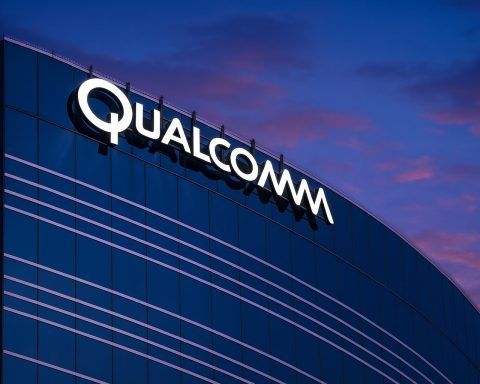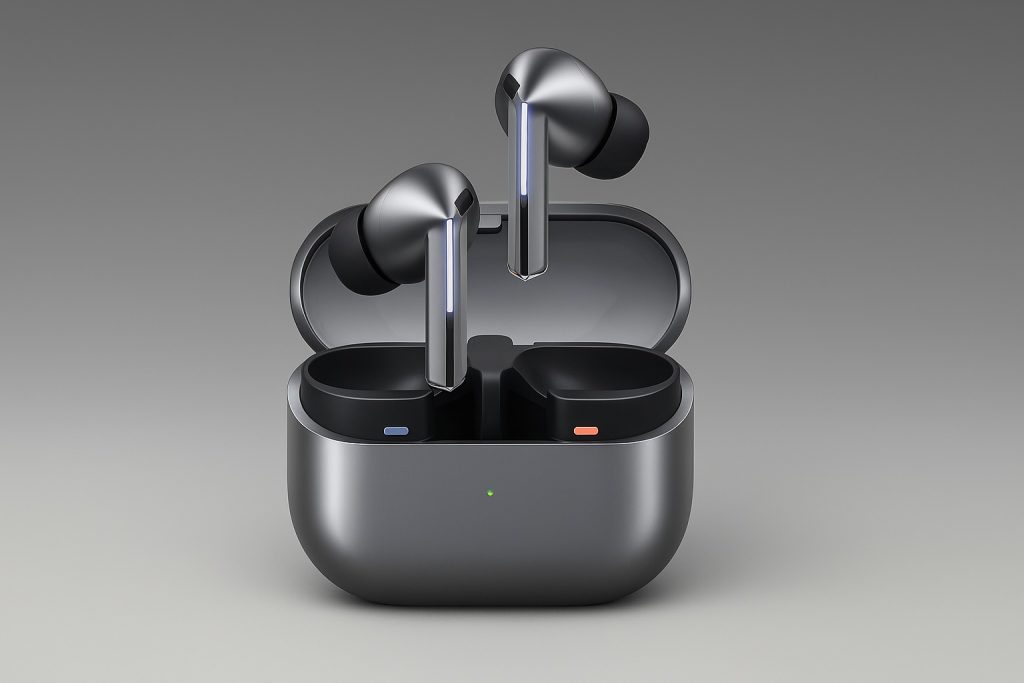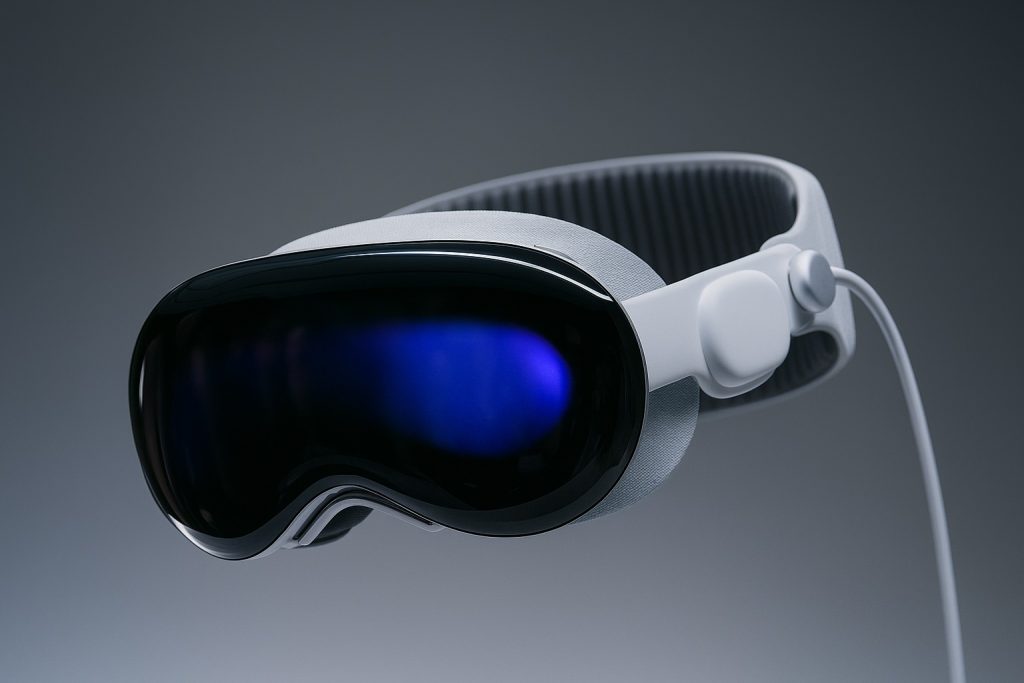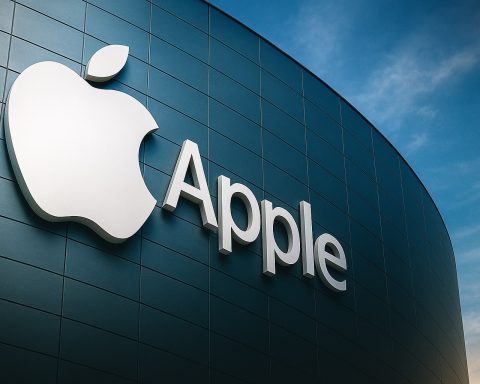- AirPods Max weighs about 385–386 grams with a stainless steel headband and anodized aluminum ear cups, while Sony WH-1000XM6 weighs about 250 grams with a plastic, memory-foam design.
- The Sony WH-1000XM6 adds a folding hinge for compact travel, whereas the AirPods Max has no hinge and uses a minimal Smart Case.
- AirPods Max uses 40 mm custom dynamic drivers, while Sony WH-1000XM6 uses 30 mm drivers.
- AirPods Max supports spatial audio with dynamic head tracking on Apple devices, while Sony WH-1000XM6 offers 360 Reality Audio with head tracking on supported services.
- AirPods Max uses AAC (plus SBC) with no LDAC or aptX, whereas Sony WH-1000XM6 supports LDAC and includes DSEE Extreme upscaling.
- ANC is driven by Apple’s adaptive computational audio on AirPods Max with 8 microphones, while Sony WH-1000XM6 uses Integrated Processor V2 with QN3 and 12 microphones for stronger ANC.
- Battery life is up to 30 hours with ANC on for Sony WH-1000XM6 (up to 40 hours with ANC off), while AirPods Max typically lasts around 20 hours.
- Sony WH-1000XM6 supports Bluetooth 5.3 and multipoint connectivity across devices, while AirPods Max uses Apple’s auto-switching in the ecosystem and does not offer traditional multipoint with non-Apple devices.
- As of May 2025, the AirPods Max is priced at $549, while the Sony WH-1000XM6 launched at $449.99.
- Apple relies on a minimalist approach with no dedicated AirPods Max app and deep Apple ecosystem integration, whereas Sony provides the Headphones Connect app for Android and iOS with EQ, ambient controls, and scene-based listening.
Apple AirPods Max vs Sony WH-1000XM6 – both are high-end wireless noise-cancelling headphones from two tech giants, but they take different approaches. Apple’s AirPods Max boasts a luxury build, seamless iOS integration, and superb spatial audio, while Sony’s new WH-1000XM6 pushes the envelope in noise cancellation, battery life, and cross-platform features. This report compares design, sound quality, noise cancellation, smart features, battery life, connectivity, price/value, expert opinions, and ideal use cases for each, to help you decide which pair suits you best.
Design and Build Quality
Materials & Aesthetics: The AirPods Max plays the part of luxury headphones with a mainly metal construction – it has stainless steel in the headband and anodized aluminum ear cups, plus a breathable knit mesh canopy for comfort [1]. This gives it a very sturdy, premium feel, but also a hefty weight (~385–386 grams) [2]. In contrast, the Sony WH-1000XM6 (like 2022’s XM5) uses a high-quality plastic build with memory-foam leatherette ear pads, making it significantly lighter (around 250 grams) [3]. The lighter build of the Sony means less strain over long listening, whereas you will feel the AirPods Max’s weight on your head despite its superb cushioning. Both have smooth telescoping arms to adjust fit and rotate their earcups flat for storage [4], but neither original design included folding hinges.
Portability & Case: Sony heard feedback and brought back the folding hinge on the WH-1000XM6, allowing the earcups to fold up into a more compact form for travel [5]. The headband is also widened for better weight distribution in the XM6 [6]. Apple’s AirPods Max, by comparison, has no hinge – the earcups only swivel flat, so it takes up more space in a bag [7]. Each comes with a carrying case, but their approaches differ. Sony provides a zippered (now magnetic-clasp) hard case that fully protects the headphones, upgraded in the XM6 with a slimmer profile and a convenient pocket for cables [8] [9]. Apple’s case, on the other hand, is a minimalist “Smart Case” that only covers the ear cups and puts the headphones in low-power mode – a design widely panned as offering “no protection” [10] and jokingly nicknamed the “purse” or “headphones bra.” In short, the AirPods Max looks and feels ultra-premium, but Sony’s XM6 is more travel-friendly (with a sturdier folding build and better case). Neither model has any official water or sweat resistance, so you should avoid getting them wet [11].
Audio Performance (Sound Quality, Codecs & Drivers)
Sound Signature: Both headphones deliver excellent sound quality, but their default tuning differs slightly. The AirPods Max uses 40 mm custom dynamic drivers engineered by Apple, which are praised for producing “rich, deep bass, accurate mid‑ranges, and crisp, clean high-frequency extension” [12]. Listeners often describe the Max’s sound as balanced and refined – it has a smooth, weighty bass and warm treble that flatters most genres [13]. Sony’s WH-1000XM6, like its predecessors, also offers a rich full-range sound but leans into a bassier, warm profile by default [14]. In fact, if you prefer a stronger bass punch, the Sony (out-of-the-box) “has you covered,” whereas the AirPods Max may suit those who want slightly less bass and treble emphasis for a more neutral presentation [15]. That said, Sony collaborated with mastering engineers to finetune the XM6’s audio, achieving “excellent bass, [wide] frequency response, soundstage and detail” according to one Grammy-winning engineer [16]. Both can deliver clear, distortion-free sound even at high volume; Apple claims under 1% total harmonic distortion on the AirPods Max’s drivers [17], and Sony’s use of a rigid carbon-fiber driver dome in the XM6 similarly aims for clarity and low distortion [18].
Spatial Audio & Immersive Sound: Spatial audio is a highlight for the AirPods Max. Paired with an iPhone/iPad or Apple TV, it uses Dolby Atmos content and built-in sensors for dynamic head-tracking, creating a surround sound effect that many find “immersive, theater-like” [19]. This feature only works within Apple’s ecosystem, however – if you’re on Android or another device, you can’t tap into Apple’s spatial audio or Adaptive EQ [20]. Sony has its own 3D audio solution: the WH-1000XM6 supports 360 Reality Audio (with head tracking) for sources like Tidal or Deezer, and introduces a new “360 Reality Audio Upmix for Cinema” that can algorithmically turn any stereo movie into a virtual spatial experience [21] [22]. This is promising for movie lovers, but early impressions suggest it may not be as mature or convincing as Apple’s implementation of spatial audio [23]. Bottom line: Apple’s spatial audio is a strong advantage if you use Apple Music or Apple TV+, while Sony offers a taste of immersive audio across platforms, though content support is more limited and the effectiveness varies.
Hi-Res Audio and Codecs: A key technical difference is codec support. The AirPods Max sticks to Apple’s favored AAC codec (plus the standard SBC) over Bluetooth, with no support for lossless codecs like aptX or LDAC [24]. This is fine for most casual listening – AAC delivers great quality on Apple devices – but it means the Max doesn’t do hi-res wireless audio. The Sony WH-1000XM6, by contrast, supports LDAC, Sony’s high-bitrate codec for transmitting higher-resolution audio over Bluetooth [25]. With a compatible source (typically an Android phone or dedicated audio player), LDAC can provide better sound quality than standard Bluetooth codecs [26]. The XM6 also features DSEE Extreme upscaling to restore detail in compressed tracks [27]. On the downside, Sony still omits Qualcomm’s aptX/HD codecs in the 1000X series (as it has since the XM4), which some Android users prefer – whereas other competitors like Bose and Sennheiser offer aptX or newer aptX Adaptive. Nevertheless, for audiophiles, the XM6’s LDAC support and manual EQ (see below) give it an edge in potential sound fidelity and customization.
Driver Size & Tech: It’s worth noting the driver size difference: AirPods Max uses 40 mm drivers [28], while Sony’s WH-1000XM6 uses smaller 30 mm drivers (same as the XM5). Don’t let the number fool you – Sony proved with the XM5 that smaller drivers can still excel by using a high-rigidity dome and soft edges to reduce harshness [29]. In fact, TechRadar found the XM5 “sounded better than the XM4” despite going from 40 mm to 30 mm [30]. The XM6’s drivers are newly developed and tuned for improved high-frequency response and noise-canceling synergy [31]. According to Sony, vocals should come through clearer and more detailed on the XM6 thanks to these refinements [32] – and in a brief hands-on, a reviewer noted “crisp, clear playback with an improvement in the bass as well” on the XM6 [33]. Meanwhile, Apple’s Adaptive EQ on the AirPods Max automatically adjusts low and mid frequencies in real time based on ear fit/seal [34], aiming to give each user optimal sound without manual tweaking.
In summary, both headphones offer outstanding audio quality for wireless cans. The AirPods Max provides a balanced, out-of-the-box sound with computational audio smarts (but little user EQ control), and it shines if you’re listening to Apple’s spatial audio content. The Sony WH-1000XM6 delivers a more customizable audio experience – a bass-friendly signature that you can EQ to taste, support for hi-res Bluetooth audio, and its own flavor of spatial sound. Casual listeners will be happy with either, but power users and audio tinkerers may appreciate the Sony’s flexibility.
Active Noise Cancellation and Transparency Modes
ANC Performance: Both the AirPods Max and WH-1000XM6 rank among the best noise-cancelling headphones you can buy, and they aggressively silence ambient noise so you can focus on your music or calls. Apple’s AirPods Max was lauded for its “fantastic” Active Noise Cancellation that can nearly hush a roaring furnace or a jet engine drone [35]. It uses 8 microphones (six outward-facing, two inside near the ears) and computational audio to adapt ANC in real time to your fit and movements [36]. Sony, however, has pulled out all the stops with the WH-1000XM6. This model is powered by Sony’s new Integrated Processor V2 with HD Noise Canceling Processor QN3, which Sony claims is 7× faster than the QN1 chip in the XM5 [37]. The XM6 also increases from 8 mics to 12 microphones placed around the earcups [38], enabling more precise sensing of external noise. In theory, the combination of QN3 + 12 mics + an improved adaptive NC optimizer gives the XM6 a further edge in ANC. Sony’s own head of audio called the XM6 “the best noise-cancelling product in the market” [39], bold words considering Bose and Apple are formidable rivals.
So does the XM6 actually cancel noise better? Early tests indicate it indeed made a leap. What Hi-Fi’s review noted this is the first time they weren’t convinced Bose’s flagship had the ANC crown, as the XM6 sounded more natural and effective at a wider range of frequencies [40]. They wrote that the AirPods Max is now “thoroughly beaten [by the XM6] for … noise-cancelling performance,” among other metrics [41]. On the other hand, lab measurements by SoundGuys found the AirPods Max and Sony XM6 are very close – “very, very similar” in how much noise each can cancel across the spectrum [42]. Both excel especially at cutting low-frequency rumble (airplane cabin noise, HVAC hum) as well as higher-pitched sounds [43] [44]. In practical terms, you can’t go wrong with either here: each will hush the outside world to a near whisper. Sony’s algorithm might handle some environments a tad better, while Apple’s might handle others, but any differences are minor. Both also adapt ANC on the fly (e.g. Apple adjusts for seal changes, Sony adapts to pressure and environment).
Transparency/Ambient Mode: Where there is a clearer difference is transparency (ambient sound) mode. Apple’s Transparency Mode on AirPods Max is often regarded as the gold standard – it uses the mics to passthrough external sound so naturally that you might forget you’re wearing headphones. Rather than simply lowering volume, it amplifies voices and lets outside sounds through in real-time, all while your music continues at a balanced level [45]. SoundGuys called the AirPods Max’s transparency “the best … around”, noting you never feel like you miss a beat of your music when hearing your surroundings [46]. Sony’s WH-1000XM6 also has an ambient sound mode that can be activated by covering an earcup or via the app. It’s very effective too – allowing you to hear announcements or have a quick chat without removing the headphones. Sony even introduced Speak-to-Chat, a smart feature where the headphones automatically pause audio and enter ambient mode when they detect you speaking. This can be great for brief interactions (say, ordering a coffee) and is a unique trick that AirPods Max doesn’t offer natively. Overall though, Apple’s implementation of transparency feels a bit more lifelike and “open”. If you frequently toggle between isolation and interacting with people, you might appreciate the AirPods Max’s near-invisible transition between ANC and transparency [47] (toggled via the Noise Control button). With Sony, you have more manual control – you can adjust ambient sound level in the app and rely on speak-to-chat – but the consensus is that Apple still leads in transparency mode realism.
Call Quality: Both use beamforming microphones for voice calls and voice assistants, but Sony put extra effort into call clarity on the XM6. It has an array of six beamforming mics and a new AI noise reduction model trained on 500 million samples to better isolate your voice [48]. In practice, Sony’s XM series have been praised for call quality – SoundGuys found the XM5’s mic picked up voices more clearly and suppressed wind noise better than AirPods Max [49] [50]. The AirPods Max’s voice mic is decent but can let more background noise through and varies with what device or OS you’re using [51] [52]. So if crisp call quality in noisy places or frequent Zoom meetings on headphones are a priority, the Sony XM6 likely has an edge here.
To sum up ANC and transparency: Noise Cancellation on both is state-of-the-art, with Sony’s latest hardware likely giving it a slight advantage at extreme cancellation (and the benefit of a dedicated on/off ANC button, plus fine-tuning in the app), while Transparency Mode is where Apple maintains an edge in natural sound passthrough. Either way, these headphones let you tune out the world – or let it back in – with impressive fidelity.
Smart Features, Controls and Customization
Both models come loaded with smart features, but they reflect their makers’ ecosystems.
Controls: Apple’s AirPods Max opts for physical controls with a premium twist. It has a satisfying Digital Crown dial (inspired by the Apple Watch) on the right earcup for volume adjustment and track controls, plus a dedicated Noise Control button to switch between ANC and Transparency [53]. Reviewers love the precision and smoothness of the crown for volume – it’s “insanely smooth” to turn [54] – and you can play/pause or skip tracks by pressing it like a button. There’s no power button at all; the AirPods Max is designed to auto-pause when removed (thanks to optical and position sensors in the ear cups) and to enter low-power sleep when placed in its case [55]. This simplicity is great when everything works as intended, though some find the lack of an off switch inconvenient (the headset will stay on for a few minutes when idle if not in the case, slowly draining battery) [56].
Sony’s WH-1000XM6 uses a mix of touch controls and buttons. The outer surface of the right earcup is a touchpad – you swipe or tap for volume, track changes, and play/pause. Sony has refined these touch controls to be very responsive and easy to use (no need to fumble for a tiny dial) [57]. Additionally, the XM6 includes physical buttons: a Power/Bluetooth pairing button and a NC/Ambient button (which toggles between noise cancelling and ambient mode, or can mute the mic during calls) [58] [59]. New on the XM6 is a quick mic mute function via a button – a handy feature for call and meeting etiquette [60]. The XM6’s control scheme is very intuitive once you learn the swipe gestures, and some people prefer it since it avoids the need for multiple exposed buttons.
Voice Assistants: Both headphones support voice assistant integration, but again geared to their ecosystems. With AirPods Max, you have always-on “Hey Siri” available (when connected to an iPhone/Apple device) – you can simply speak to summon Siri for music commands, volume, messages, etc., or press and hold the crown to talk to Siri [61]. However, Siri is the only native assistant supported; if you use the AirPods Max with Android or Windows, the assistant button won’t invoke Google Assistant or Alexa [62]. You’d have to trigger the assistant from your device in those cases. Sony takes a platform-agnostic approach: through the Sony Headphones Connect app, you can configure the WH-1000XM6’s assistant integration to either Google Assistant or Amazon Alexa (or use the default device assistant). Once set, you can prompt the assistant with a button or voice command. This flexibility is great for Android users. Additionally, Sony’s microphones allow features like Speak-to-Chat (music pauses when you start talking, as mentioned) and Quick Attention (cover the right earcup with your hand to temporarily pipe in outside sound), which make interactions very convenient.
Customization and Apps: Apple’s philosophy with AirPods Max is plug-and-play minimalism – there is no dedicated AirPods Max app. On iOS, some settings appear in the Bluetooth menu (e.g. you can reassign the noise control button behavior or toggle spatial audio), but there’s no EQ adjustment or sound presets offered by Apple. The headphones do a lot automatically (Adaptive EQ, auto device switching, etc.), but you can’t manually tweak the sound beyond choosing from a few Apple Music EQ presets at the software level. In contrast, Sony’s Headphones Connect app (for iOS and Android) gives a wealth of customization for the WH-1000XM6. You can manually adjust a 10-band EQ (or use presets/custom profiles), toggle features like Speak-to-Chat, set the level of ambient sound, customize the touch controls, and even enable things like Adaptive Sound Control (which automatically changes ANC/transparency settings based on your activity or location). Sony’s app also now includes a “Scene Based Listening” mode which can automatically play appropriate ambient sound or music settings when it detects you’re for example, walking outside versus sitting in an office [63]. Furthermore, the XM6 supports Bluetooth multipoint (more on that next), which you manage through the app. In short, the Sony offers far more user control over the listening experience, whereas Apple keeps it simple and bakes most choices in by default.
Sensors and Extras: Both headphones have wear detection sensors: remove them and music will auto-pause, put them back and it resumes (this works perfectly on Apple devices for AirPods Max; the XM6 also does this reliably across devices). Both also support features like Find My Device (AirPods Max integrate with Apple’s Find My network to locate them if misplaced; Sony’s app can show the last known location of the XM6 as well). One thing to note: certain AirPods Max features only work on Apple gear – for example, firmware updates and battery status are handled via iOS, and as mentioned earlier, you can only toggle certain ANC settings from an iPhone (on Android you’re basically limited to using whatever state the headphones were last in). SoundGuys aptly noted that “if you live in the Apple ecosystem… AirPods Max is more of the same [AirPods experience] just in over-ears,” but outside that walled garden, some “perks” won’t work and “the experience will greatly suffer” [64]. On the flip side, Sony’s XM6 is OS-agnostic: it works consistently with any Bluetooth device, and the robust app is on both iOS and Android (though iPhone users miss out on LDAC codec, since Apple devices don’t support it – they’ll use AAC).
Overall, Apple’s AirPods Max excels at seamless simplicity for Apple users – its controls are tactile and pleasant, and things like auto-pairing, Siri, and instant switching between your Mac/iPhone/iPad feel like magic (provided all are on the same iCloud account). Sony’s WH-1000XM6 excels at flexibility – you have more ways to control and personalize the experience, from EQ to voice assistant choice, making it a better fit if you want fine control or use multiple platforms. Just keep in mind that the AirPods Max’s unique features (like Spatial Audio with dynamic head tracking and automatic device switching) largely only shine with Apple hardware and services [65].
Battery Life and Charging
Battery Longevity: Sony’s WH-1000XM6 is a clear winner in endurance. Like its predecessors, it boasts up to 30 hours of playback on a full charge with ANC turned on [66] [67]. In fact, Sony rates it 30 hours with noise cancelling or ambient mode active, and up to 40 hours if you turn off ANC entirely [68]. This is excellent for long travel or multi-day use. Apple’s AirPods Max, by comparison, is rated for about 20 hours of listening with ANC (or Transparency) on [69]. Real-world tests have confirmed around 20–21 hours on the AirPods Max, which should cover a long-haul flight or a full day of work, but it’s notably less than what Sony offers [70]. Both devices preserve battery well when not in use (Apple by sleeping in the case; Sony by having a power-off or standby timer). Still, heavy users will appreciate that extra 10+ hours the XM6 gives – it can easily go a few days without charging, whereas AirPods Max might be an every-night charge if you use it a lot.
Fast Charging: Both headphones support quick-charge to give you a boost in a pinch. Sony advertises that just 3 minutes of charging the WH-1000XM6 yields about 3 hours of playback [71] – a fantastic ratio made possible by USB-C Power Delivery. Apple’s fast-charge claims for AirPods Max are a bit more modest: while not explicitly in Apple’s PR, reviewers noted around 5 minutes of Lightning charging gives roughly 1.5 hours of listening time. (Apple’s official spec is 1.5 hours from a 5-min charge with a 20W adapter.) So Sony’s fast charge is slightly quicker in minutes-per-hour gained, but in everyday terms both can grab a couple hours of juice from just a short charge if you’re heading out the door.
Charging Port & Cable: Initially, the AirPods Max only came with a Lightning to USB-C cable for charging. However, as of late 2024 Apple quietly released a new AirPods Max revision that uses USB-C instead of Lightning for charging [72]. This was largely to comply with EU regulations, but it benefits users by simplifying cables – you can now charge your AirPods Max with the same USB-C cable as a MacBook or iPad. Sony’s WH-1000XM6 has been USB-C from the start (like all recent Sony headphones).
One notable difference: wired audio connectivity. The WH-1000XM6 has a 3.5mm audio jack on the headphone and includes a cable in the box [73], so you can plug into an airplane seat or any analog source. The AirPods Max has no 3.5mm jack on the unit; you must buy a Lightning/USB-C to 3.5mm audio cable (sold separately for about $35) if you want to use a wired connection for in-flight entertainment or hi-fi sources [74]. This was a pain point, though with the USB-C update, Apple’s cable now at least allows a pure digital connection to devices. In fact, using a USB-C cable, the AirPods Max can function as a USB audio output, enabling lossless audio playback from a source device [75]. A TechRadar editor noted that this finally lets her enjoy full lossless quality on AirPods Max via a wired USB-C connection, something not previously possible with the Lightning (which did analog conversion) [76]. Sony’s XM6 still does not support audio-over-USB; you can use it wired, but only through the analog jack (Sony does not allow digital audio via its USB-C port, which is strictly for charging) [77]. So in a twist, the AirPods Max (USB-C model) offers a better wired listening option if you want highest fidelity or no latency.
Battery Maintenance: One more point on battery: Both headphones have non-user-replaceable batteries (rated for hundreds of cycles). Apple doesn’t provide an easy way to swap batteries; you’d have to service the unit (and outside warranty that can be pricey). Sony’s battery is also internal, but they tend to maintain capacity well. You should avoid leaving the AirPods Max out of the case for long periods since it doesn’t truly “off” – Apple’s approach drew some criticism for wasting power [78] [79]. They may push firmware updates to optimize standby drain. Sony’s design, with an actual power button, lets you fully turn it off when not in use, potentially preserving battery health in the long run.
Overall, Sony wins on battery life by a comfortable margin – an important factor for travelers and all-day listeners. Apple’s battery life is solid but not exceptional for its class, which is a trade-off for its always-on convenience features. Thankfully, quick-charging on both means you’re rarely stranded without juice, and if you carry a power bank, a few minutes of charge goes a long way.
Connectivity and Compatibility
Bluetooth Version & Multipoint: The WH-1000XM6 uses the latest Bluetooth 5.3 radio, whereas the AirPods Max uses Bluetooth 5.0 (the 2024 USB-C revision likely still has a similar BT version, as Apple didn’t update the internal chip). In practice, both have strong wireless range and stability. The XM6’s Bluetooth 5.3 opens the door to future support of Bluetooth LE Audio features – indeed, Sony has included Auracast broadcast audio capability on the XM6 [80], which is a new BT 5.3 feature that lets the headphones receive audio from public transmitters (useful for things like connecting to a TV in a gym or sharing audio from one phone to multiple headphones). While Auracast isn’t widely used yet, it’s a forward-looking addition. The AirPods Max doesn’t support Auracast or Bluetooth LE Audio at this time.
Sony also continues to support Multipoint pairing on the WH-1000XM6 – you can be connected to two devices simultaneously (say, your laptop and phone) and the headphones will intelligently switch to whichever is playing audio or receiving a call. This works across different operating systems and is very handy if you frequently multitask between a computer and phone. The AirPods Max lacks traditional multipoint for two non-Apple devices, but it has Apple’s proprietary auto-switching. If you’re deep in the Apple ecosystem, the AirPods Max can seamlessly switch between your iPhone, iPad, and Mac signed into the same iCloud account. For example, finish watching a movie on your iPad and answer a call on your iPhone – the AirPods Max will auto-connect to the phone. This is convenient, but note it only works with Apple devices (and sometimes can hiccup if multiple devices send audio – users occasionally turn off auto-switching for reliability). If using AirPods Max with, say, an Android phone and a Windows PC, you’d have to re-pair or manually switch connections each time like any basic Bluetooth headphone. In contrast, the XM6’s multipoint could pair to an Android phone and a Windows PC at once without issue. One caveat: using Sony’s LDAC codec disables multipoint (you must switch to AAC/SBC for two-device connections). Still, for cross-platform users or those who mix devices, Sony’s approach is more flexible.
Ecosystem Integration: On compatibility, this really boils down to Apple-centric vs universal. The AirPods Max is built to be a dream companion for Apple device owners. Setup is as simple as bringing it near an iPhone and tapping connect. It syncs across your Apple devices, so no need to pair individually. It also works with Apple TV (for spatial audio) and even supports features like audio sharing (two sets of AirPods can listen to one iPhone output). None of these are available on Sony – you’ll have to pair via standard Bluetooth menus. That said, pairing the Sony XM6 is still easy (especially with features like Google Fast Pair or Microsoft Swift Pair on Android/Windows). When it comes to Android friendliness, Sony is the obvious choice. The AirPods Max does function with Android phones as a basic Bluetooth headphone (ANC and Transparency toggling still work via the button), but you lose a lot: no Siri, no spatial audio, no automatic pausing (the sensors don’t communicate with Android), and even the battery level is not natively shown on Android. As What Hi-Fi bluntly put it, the AirPods Max is “thoroughly beaten” by the competition when it comes to “Android friendliness” [81]. The XM6, on the other hand, works great with Android and iOS alike – and on Android you get extra goodies like LDAC codec and Google Assistant integration.
Latency & Gaming: Neither of these is really geared for gaming, but Apple does some latency optimization when used with Apple devices (so video and audio sync well on iPhone/iPad). On Android, the latency may be higher for AirPods Max since AAC isn’t as optimized on some devices. Sony’s LDAC can introduce higher latency too, but you can switch to normal mode for better sync. Sony also added a “Game Mode EQ” profile in its app (leveraging some tech from their INZONE gaming headsets) [82] – this doesn’t reduce latency, but it can enhance FPS game sound cues if you use the XM6 for casual gaming.
Wired Connectivity: We covered this in the battery section – just to reiterate, Sony XM6 has a 3.5mm jack for universal analog wired use (included cable), AirPods Max requires a special cable for wired use (digital USB-C or analog 3.5mm, sold separately). Neither headphone supports an analog cable and mic together (the AirPods Max’s built-in mic doesn’t work when using the wired cable [83], making it suboptimal for gaming chat; the Sony can use its mic when plugged into certain 3.5mm sources like phones, but not all).
Range and Signal: Both have excellent Bluetooth range (roughly 10 meters or more line of sight). They also handle crowded signal environments well. AirPods Max uses Apple’s H1 chip in each ear cup to maintain a strong connection and even can seamlessly pass audio between cups for stability [84]. The XM6 likely has comparable or better radio performance given the Bluetooth 5.3 spec and Sony’s antenna design improvements in recent models.
In summary, if you are an Apple-only user, the AirPods Max offers deep integration that the Sony simply can’t match – “it just works” with your iPhone and friends, and features like spatial audio and auto-switching are big pluses [85]. If you use any non-Apple devices or value versatility, the Sony WH-1000XM6 is far more compatible and feature-rich across platforms. It embraces open standards (app on all platforms, Google/Alexa support, multipoint Bluetooth) and won’t penalize you for not being in one ecosystem. As one expert noted, Sony manages to be top-tier in almost every area – whereas Apple’s Max, for all its strengths, caters primarily to iOS devotees [86].
Price, Value, and Warranty
Price Tags: When it comes to pricing, Apple’s AirPods Max has been firmly in the ultra-premium bracket since launch. Its official retail price is $549 USD (and £549 in the UK / €629 in Europe). This makes it more expensive than virtually all rivals in the consumer ANC headphone space. The Sony WH-1000XM6, introduced in May 2025, comes in at $449.99 USD (and about £399 / €450) [87]. That’s a $50 increase over the previous XM5 (which launched at $399) [88], but still undercuts the AirPods Max by about $100 in the US [89]. Sony’s pricing also puts the XM6 on par with other flagship headphones like the Bose QuietComfort Ultra (around $429) and Bowers & Wilkins PX7 S2e. Meanwhile, the AirPods Max’s high price has softened a bit at retailers – it’s not uncommon to find it on sale in the $450–$500 range in 2025, but it remains pricier than the Sony even on sale.
What You Get for the Money: Value-wise, the $100 premium for Apple gets you that tank-like build, the Apple-specific features, and the prestige of the brand. Many reviewers felt the AirPods Max was overpriced at launch, considering competitors were significantly cheaper [90]. Sony, on the other hand, has aimed to justify the XM6’s slight price hike by packing in new tech (the foldable design, new chip, more mics, etc.) while still being less costly than Apple’s offering. In terms of accessories, Sony is actually more generous: the WH-1000XM6 includes the carry case, a 3.5mm audio cable, and a charging cable. Apple’s AirPods Max includes the Smart Case and a Lightning/USB-C charge cable, but no audio cable – that $35 accessory is extra. So, out of the box, the Sony is ready for both wireless and wired use; the AirPods Max will cost a bit more if you need wired listening.
Warranty and Support: Apple and Sony both typically provide a 1-year limited warranty against manufacturing defects. Apple offers the option to purchase AppleCare+ for AirPods Max, which can extend coverage and reduce the cost of accidental damage repairs. Sony doesn’t have an equivalent company-specific extended warranty, but retailers might offer protection plans. One thing to consider is after-sales service: Apple is known for its support infrastructure – if something goes wrong with AirPods Max, you can take it to an Apple Store or authorized service easily (though repairs like battery service or cup replacement can be expensive out-of-warranty). Sony has service centers, but the process might be less straightforward (usually mailing in the unit).
Resale and Longevity: AirPods Max have held their value reasonably well (the high initial price helps, and there’s demand from Apple aficionados). Sony’s headphones historically depreciate a bit faster, especially once a newer model is announced (e.g. XM4 prices dropped when XM5 came out, and so on). If you consider longevity, note that by July 2025 the AirPods Max is already ~4.5 years old (with just that connector refresh) – there are rumors of an “AirPods Max 2” eventually, which could potentially bring new features. Sony’s XM6 is brand new and likely to stay top of Sony’s lineup for 2–3 years.
From a pure value perspective, most experts lean toward the Sony. What Hi-Fi points out that the AirPods Max is “now thoroughly beaten” by the XM6 in sound, noise-canceling, battery life, and codec support for a lower price [91]. Unless one specifically needs the AirPods Max’s unique Apple integrations, the XM6 offers more bang for the buck. That said, if you are firmly an Apple user and you’ll utilize things like spatial audio and seamless device switching every day, you might justify the extra cost for the AirPods Max – especially if you can find it on sale.
In summary: AirPods Max costs significantly more, and while it delivers premium quality, you pay a premium largely for the build and Apple ecosystem magic. Sony’s WH-1000XM6 is more affordable and arguably a better value for most people, given it includes all accessories and outperforms or matches the AirPods Max in many technical aspects. On warranty, expect similar standard coverage; just factor in the cost of AppleCare+ if you want peace of mind for the Max (and perhaps the eventual need to replace batteries after a few years, which Apple will do for a fee since they are not user-serviceable).
Expert and Reviewer Opinions
It’s illuminating to see what professional reviewers and publications have to say about these headphones when comparing them:
- Sound Quality & ANC: Many reviewers agree both models are stellar. SoundGuys, after extensive testing, concluded that by default “music generally sounds great” on both, appealing to most listeners. They note that the Sony offers more bass while “the Apple AirPods Max is likely a better choice for those seeking less obvious bass and treble emphasis,” though both can be EQ’d (easier on the Sony via its app, especially for Android users) [92]. On noise canceling, SoundGuys measured the AirPods Max and Sony’s ANC to be almost on par, saying “you can’t go wrong with either” for cutting noise [93]. Rtings.com also gives both top marks, calling the AirPods Max’s noise cancelling “outstanding” and Sony’s XM5/XM6 performance class-leading as well [94].
- Build & Comfort: Reviewers praise AirPods Max’s build quality universally – Rtings lists “Great build quality” as a pro [95], and users often comment on the premium feel of the metal and mesh. However, nearly every review mentions the weight; it is heavy. “They’re a bit heavy and not very portable,” notes Rtings, even as they find them decently comfortable for moderate use [96]. The Sony XM5/6, while not as flashy in materials, is lauded for comfort – TechRadar notes the XM6 has an “ultra-comfy fit” with its wider headband and soft earpads, making it easy to wear for long sessions [97]. What Hi-Fi? highlighted that the XM6’s design improvements (like the foldable hinge and refined padding) could “finally tempt [an Apple fan] away from my favorite wireless headphones for travelling”, emphasizing how important those practical design points are [98].
- Ecosystem and Features: As expected, Apple’s integration got positive nods. “If you own an iPhone, the AirPods Max connect nicely to any iOS device,” notes SoundGuys, and they awarded it an Editor’s Choice for its seamless user experience within Apple’s world [99] [100]. But they also warn that you “should only get the AirPods Max if you own an iPhone”, because without iOS, you lose much of what makes them special and “it will absolutely not be worth the money” [101]. On the Sony side, experts commend the breadth of features: “With great features like speak-to-chat, transparency mode, Sony 360 Audio, ear detection, and multipoint, [the XM5/XM6 are] great and worth its price,” says SoundGuys [102]. TechRadar’s 5-star review of the XM6 similarly applauds that “there’s a lot to love about these headphones”, from the refined design to the “ton of features at your disposal,” even if they “come at quite the cost” (referring to that $449 price) [103].
- Overall Verdicts: TechRadar summed it up by calling the Sony WH-1000XM6 “a fantastic pair of over-ear headphones that combine the best design elements of their predecessors, while levelling up the sonic and ANC capabilities of what came before.” They highlight the XM6’s “super-clean touch controls, ultra-comfy fit, and a ton of features,” saying there’s a lot to love about them [104]. On the AirPods Max, reviewers often mention that it remains one of the best in terms of ANC and sound, but with caveats. For instance, SoundGuys’ bottom line was that the AirPods Max is “a spectacular pair of headphones with best-in-class ANC” and excellent audio quality, yet with “a few annoying quirks that make it very obviously an Apple product.” [105] They reference things like the lack of a power button, the Lightning port, and limited Android functionality as quirks one must live with.
- Sony XM6 vs AirPods Max Directly: What Hi-Fi?’s Managing Editor, Becky Roberts, gave perhaps the clearest verdict after testing the XM6 against its rivals. She writes that the XM6 “extends the gap” between Sony’s flagship and Apple’s AirPods Max – “the latter now thoroughly beaten for sound quality, noise-cancelling performance, battery life, Android friendliness and Bluetooth codec support.” [106] In her view, the Sony is the new king in almost all technical areas. However, she also notes that many Apple fans will still favor the AirPods Max for its “iOS device slickness and features”, particularly spatial audio with head tracking, which Sony’s solution can’t fully replicate [107]. In other words, if you prize that Apple-specific user experience, the AirPods Max still holds appeal despite being outperformed in raw specs.
In conclusion, expert consensus is that Sony’s WH-1000XM6 has raised the bar even higher, making it arguably the best all-around noise-canceling headphone in 2025 with improvements in every area. Apple’s AirPods Max, while a bit older, is still praised for its sound, ANC, and premium design, especially if you’re in the Apple camp. Critics love both – but they also clearly outline that Sony offers more versatility and newer tech for less money, whereas Apple offers a luxurious, integrated experience at a higher cost. Keep these opinions in mind relative to your own needs.
Credible Rumors and Leaks (Pre-Launch Insights)
(If you’re curious, here’s a brief look at what was expected for the WH-1000XM6 before it launched – and which rumors came true.) Prior to the XM6’s official release in May 2025, leaks had already revealed many of its upgrades. For instance, early retail leaks hinted at a small price hike (to around $499), which turned out to be $449 USD in reality [108] [109]. More exciting for fans, images from a Sony marketing slide showed that the hinge design was returning, allowing the XM6 to fold – this was confirmed on launch, addressing complaints that the XM5’s non-folding design wasn’t travel-friendly [110] [111]. Leaked specs on Amazon also mentioned the new QN3 noise-canceling chip and 12 mic setup, claiming significantly faster processing and better ANC – and indeed Sony touted the QN3 as 7× faster with four extra mics for “best noise cancelling yet” during the official announcement [112] [113].
Other rumors spoke of Personalized Spatial Audio support and continued 30mm drivers, which also proved true (the XM6 did not change driver size, focusing on refining the 30mm design) [114]. A more durable case with a magnetic clasp was leaked via The Walkman Blog, and Sony delivered exactly that in the final product [115]. Essentially, by launch day there were few surprises left – the XM6 was almost fully telegraphed by credible leaks, and Sony’s event confirmed those features and improvements. For Apple, rumors about an AirPods Max 2 have been swirling given the original’s age – expectations include things like a new chip, lighter design, and better codecs – but as of mid-2025, Apple has only issued the minor USB-C refresh [116]. So if you’re holding out for the next AirPods Max, you might be waiting a bit longer (though many advise that an eventual sequel is worth waiting for rather than paying full price now [117]).
Target Audience and Use Cases
Finally, who should choose the AirPods Max and who should choose the Sony WH-1000XM6? Both are fantastic, but your ideal pick depends on your lifestyle and priorities:
- Apple Enthusiasts and iOS Power Users: If you are deeply embedded in the Apple ecosystem (iPhone, iPad, Mac, Apple TV) and you love the little conveniences – instant pairing, auto-switching between devices, “Hey Siri” voice commands, and spatial audio in Apple Music/TV – the AirPods Max will delight you. It’s made to be an extension of Apple’s world. For someone who wants their headphones to integrate seamlessly with their other Apple gear, the tight synchronization and polish of the AirPods Max can outweigh its higher cost. You’ll also appreciate its build quality as a premium Apple product. (On the flip side, if you’re an Android or Windows user primarily, AirPods Max are not ideal for you, as many features won’t work – you’d be paying a premium for functions you can’t use.)
- Frequent Travelers and Commuters: For those often on planes, trains, or noisy commutes, noise cancellation and battery life are key. Both models have top-tier ANC, but the Sony WH-1000XM6 might be preferable here. Its 30-hour battery can get you through the longest flights and layovers without needing a charge (versus ~20 hours on AirPods Max) [118]. The foldable design and robust carry case of the XM6 also make it more compact in your backpack or luggage [119]. Sony’s ambient sound control and speak-to-chat are great for hearing announcements or ordering a coffee without removing the headphones. The AirPods Max certainly can travel (and some swear by its ANC on airplanes), but its heavier weight and bulky case are less travel-friendly. If you do choose AirPods Max for travel, consider investing in a third-party hard case to protect it, as the included case isn’t great for being tossed in a bag.
- Office Workers and Remote Conferencers: If you plan to wear these in the office or home office for long stretches, comfort and call quality come into play. The Sony XM6, with its lighter weight and very plush fit, is easier on the head for multi-hour wearings [120]. It also has the advantage in microphone quality for calls – colleagues will hear you more clearly with Sony’s new mic system and AI noise reduction, even if you’re in a noisy environment [121] [122]. Additionally, multipoint connectivity on the XM6 means you can seamlessly take Zoom calls on your laptop and then answer a phone call, without manually switching headsets. The AirPods Max is still fine for office use (its ANC can drown out chatter or typing noise effectively, and it’s decently comfy), but some find the weight fatiguing after a few hours continuously. Also, if you’re on non-Apple hardware for work (like a Windows PC), you lose the AirPods Max’s best tricks – whereas the Sony will play equally nice with work devices.
- Audiophiles and Tinkerers: Neither of these is an “audiophile” headphone in the purist wired sense, but for those who care about audio fidelity and personalization, the Sony WH-1000XM6 is the better fit. Its support for LDAC codec and hi-res wireless audio [123], plus a full EQ customization in the app, means you can get it sounding closer to your ideal preference. Want more treble sparkle or to tame the bass? You can dial that in on the Sony. The AirPods Max has a very good sound out of the box, but you are essentially trusting Apple’s tuning and Adaptive EQ; you can’t manually adjust the sound profile on the device. Also, if you have a collection of lossless music and a nice DAC, with AirPods Max (USB-C) you could at least listen via a wired digital connection now, but it’s not as straightforward a use-case as with a true audiophile headphone. The XM6’s ability to plug in via analog cable to a high-quality source (or Bluetooth LDAC from a DAP) makes it more flexible for high bitrate listening. Simply put, if you like to fine-tune your audio or use niche sources, Sony gives you more freedom.
- Casual Listeners and Everyday Use: For everyday use – from walking around the neighborhood to relaxing at home – both headphones will serve you extremely well. Comfort might be the deciding factor here. The AirPods Max, despite its weight, has that wonderful mesh headband that distributes weight and memory foam ear cushions that many find very comfortable in moderate use [124] [125]. But if you’re sensitive to weight or have a smaller head, the lighter Sony might literally be a better fit. Consider style too: AirPods Max comes in multiple colors and has that Apple design flair that some love as a fashion statement. The Sony XM6 comes in classic black, silver, or a new blue, with a more understated matte look. Both are fairly sleek and minimalist in appearance. For casual use, also consider that AirPods Max are not water-resistant at all, so if you might get caught in a bit of rain or want to do light workouts, that’s a risk (Sony’s aren’t water-rated either, but the mostly plastic build might handle a few drops of rain slightly better – still, neither is intended for gym or running use) [126].
- Budget-Conscious Buyers: If you’re weighing value heavily, the Sony XM6 provides a more complete package for less money. At $449 (and likely to drop over time or see discounts), it’s still expensive, but you’re getting almost every feature on the market. The AirPods Max’s high price is hardest to swallow if you won’t use the Apple-only features much. However, if you find a very good deal on AirPods Max and you are an Apple user, it can be a tempting buy – they have been seen for under $400 refurbished or on sale, which starts to put them closer to Sony’s price. Just remember that a second-generation AirPods Max might be on the horizon (no official word yet), which could either drop the original’s price further or make you wish you had waited.
In summary: Choose Apple AirPods Max if you are an Apple die-hard who values the luxurious build, top-notch ANC/transparency, and seamless integration with your Apple devices (and you don’t mind paying a premium for it). Choose Sony WH-1000XM6 if you want the most feature-packed, technologically advanced noise-canceling headphones that excel in practically every category – especially if you use Android or a mix of devices, travel often, or just want the best value for your money in the high-end headphone range. Both will deliver an amazing audio experience; it’s about which one aligns with how and where you’ll use them.
Conclusion
The Apple AirPods Max and Sony WH-1000XM6 are both flagship headphones that truly deliver on sound and silence. The AirPods Max impresses with its timeless design, superb noise cancellation, and the kind of user experience that’s only possible when you build the hardware and software under one roof – it’s an excellent choice for those in the Apple ecosystem who want headphones that “just work” with their life. The Sony WH-1000XM6, on the other hand, represents the pinnacle of Sony’s audio expertise, taking an already class-leading product and making it even better with smarter noise canceling, longer battery life, and more comfort and portability. It’s the swiss-army knife of wireless headphones – versatile, loaded with features, and tuned by audio pros to please even demanding ears.
In a direct shoot-out, Sony’s newcomer manages to outshine the AirPods Max in many technical aspects [127], but the choice ultimately comes down to your priorities. If you crave ultimate compatibility, customization, and long-haul performance, the WH-1000XM6 is hard to beat. If you love beautiful design, crave that Apple synergy, and appreciate audio gadgets as much for their form as their function, the AirPods Max can be incredibly satisfying. Both are among the best headphones in the world in 2025 – a win for listeners no matter which you choose.
Sources:
- Apple AirPods Max Press Release – Apple Newsroom [128] [129]
- SoundGuys – Sony WH-1000XM5 vs Apple AirPods Max (updated June 2025) [130] [131]
- TechRadar – Sony WH-1000XM6 review (May 2025) [132]
- TechRadar – Sony WH-1000XM6 official launch – 3 things to know [133] [134]
- What Hi-Fi? – WH-1000XM6 vs AirPods Max commentary (May 2025) [135] [136]
- Rtings – Apple AirPods Max Review (updated 2024/2025) [137] [138]
- SoundGuys – Apple AirPods Max Review (updated May 2025) [139] [140]
- SoundGuys – Sony WH-1000XM5 Review / Comparison [141] [142]
- What Hi-Fi? – Sony WH-1000XM6 unveiled (news) (May 2025) [143] [144]
- What Hi-Fi? – Flagship ANC headphones beaten by their successors (Feature, May 2025) [145] [146]
- TechRadar – USB-C audio in AirPods Max (opinion) (July 2025) [147]
References
1. www.soundguys.com, 2. www.soundguys.com, 3. www.soundguys.com, 4. www.soundguys.com, 5. www.techradar.com, 6. www.techradar.com, 7. www.soundguys.com, 8. www.techradar.com, 9. www.techradar.com, 10. www.soundguys.com, 11. www.soundguys.com, 12. www.apple.com, 13. www.rtings.com, 14. www.soundguys.com, 15. www.soundguys.com, 16. www.prnewswire.com, 17. www.apple.com, 18. www.prnewswire.com, 19. www.apple.com, 20. www.soundguys.com, 21. www.techradar.com, 22. www.whathifi.com, 23. www.whathifi.com, 24. www.soundguys.com, 25. www.techradar.com, 26. www.techradar.com, 27. www.prnewswire.com, 28. www.apple.com, 29. www.techradar.com, 30. www.techradar.com, 31. www.whathifi.com, 32. www.techradar.com, 33. www.techradar.com, 34. www.apple.com, 35. www.soundguys.com, 36. www.apple.com, 37. www.techradar.com, 38. www.techradar.com, 39. www.whathifi.com, 40. www.whathifi.com, 41. www.whathifi.com, 42. www.soundguys.com, 43. www.soundguys.com, 44. www.soundguys.com, 45. www.soundguys.com, 46. www.soundguys.com, 47. www.soundguys.com, 48. www.techradar.com, 49. www.soundguys.com, 50. www.soundguys.com, 51. www.soundguys.com, 52. www.soundguys.com, 53. www.soundguys.com, 54. www.soundguys.com, 55. www.soundguys.com, 56. www.soundguys.com, 57. www.techradar.com, 58. www.techradar.com, 59. www.prnewswire.com, 60. www.prnewswire.com, 61. www.soundguys.com, 62. www.soundguys.com, 63. www.prnewswire.com, 64. www.soundguys.com, 65. www.whathifi.com, 66. www.techradar.com, 67. www.techradar.com, 68. www.techradar.com, 69. www.soundguys.com, 70. www.soundguys.com, 71. www.techradar.com, 72. www.soundguys.com, 73. www.techradar.com, 74. www.soundguys.com, 75. www.techradar.com, 76. www.techradar.com, 77. www.whathifi.com, 78. www.soundguys.com, 79. www.soundguys.com, 80. www.techradar.com, 81. www.whathifi.com, 82. www.prnewswire.com, 83. www.rtings.com, 84. www.rtings.com, 85. www.whathifi.com, 86. www.whathifi.com, 87. www.techradar.com, 88. www.whathifi.com, 89. www.techradar.com, 90. recordingnow.com, 91. www.whathifi.com, 92. www.soundguys.com, 93. www.soundguys.com, 94. www.rtings.com, 95. www.rtings.com, 96. www.rtings.com, 97. www.techradar.com, 98. www.whathifi.com, 99. www.soundguys.com, 100. www.soundguys.com, 101. www.soundguys.com, 102. www.soundguys.com, 103. www.techradar.com, 104. www.techradar.com, 105. www.soundguys.com, 106. www.whathifi.com, 107. www.whathifi.com, 108. www.techradar.com, 109. www.techradar.com, 110. www.techradar.com, 111. www.techradar.com, 112. www.techradar.com, 113. www.techradar.com, 114. www.techradar.com, 115. www.techradar.com, 116. www.techradar.com, 117. www.soundguys.com, 118. www.soundguys.com, 119. www.techradar.com, 120. www.soundguys.com, 121. www.soundguys.com, 122. www.soundguys.com, 123. www.techradar.com, 124. www.soundguys.com, 125. www.soundguys.com, 126. www.soundguys.com, 127. www.whathifi.com, 128. www.apple.com, 129. www.apple.com, 130. www.soundguys.com, 131. www.soundguys.com, 132. www.techradar.com, 133. www.techradar.com, 134. www.techradar.com, 135. www.whathifi.com, 136. www.whathifi.com, 137. www.rtings.com, 138. www.rtings.com, 139. www.soundguys.com, 140. www.soundguys.com, 141. www.soundguys.com, 142. www.soundguys.com, 143. www.whathifi.com, 144. www.whathifi.com, 145. www.whathifi.com, 146. www.whathifi.com, 147. www.techradar.com
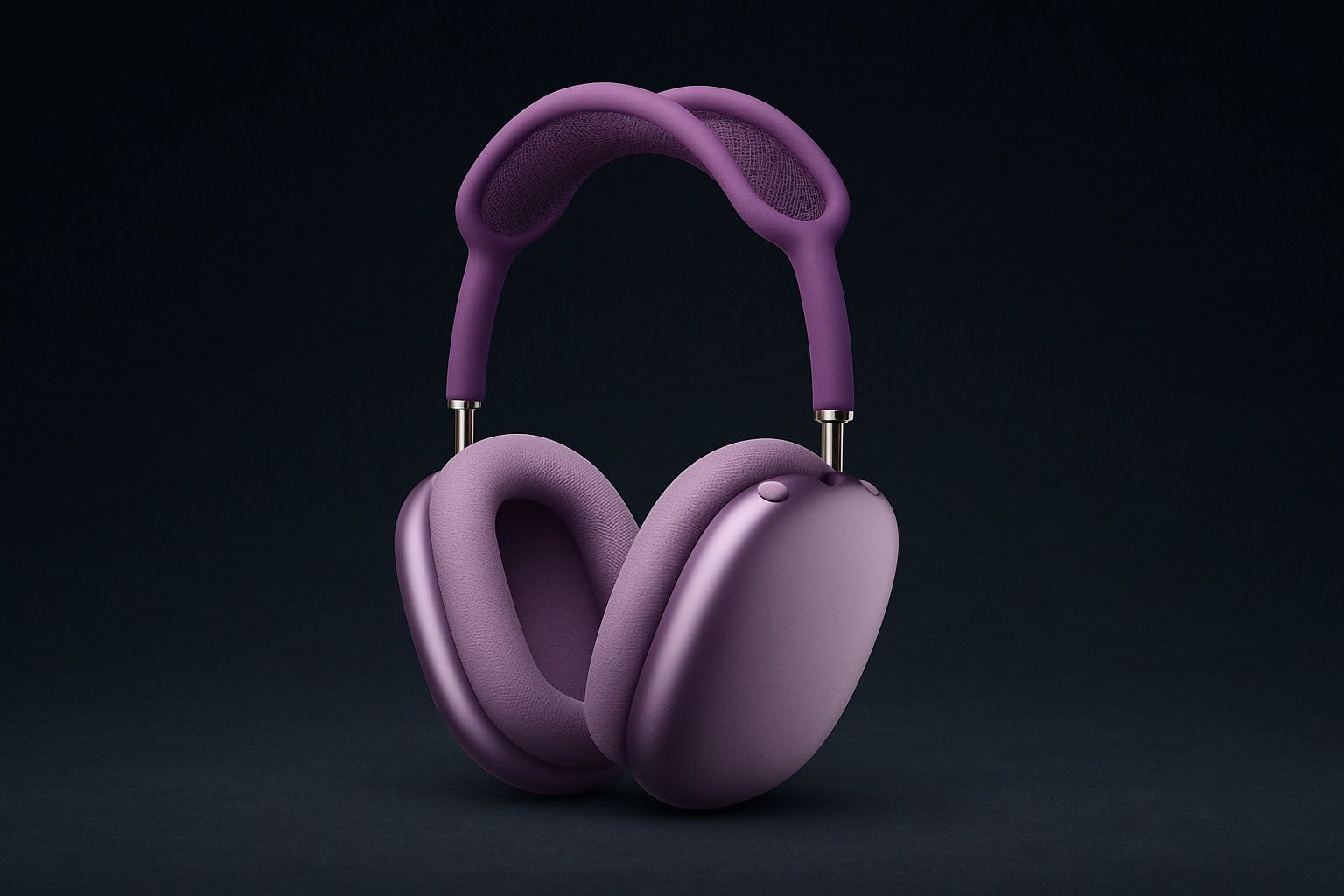

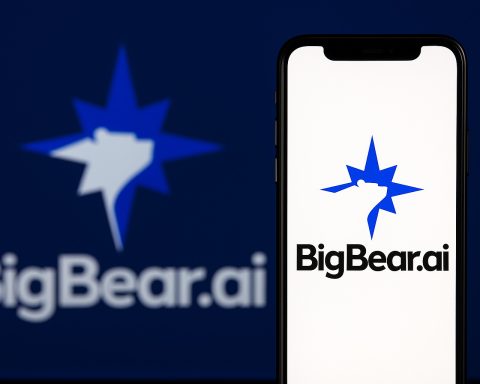
![Plug Power (PLUG) Today: Q3 Results Set the Stage for a $275M Liquidity Pivot, Data‑Center Push, and Fresh Analyst Calls [Nov 11, 2025] Plug Power (PLUG) Today: Q3 Results Set the Stage for a $275M Liquidity Pivot, Data‑Center Push, and Fresh Analyst Calls [Nov 11, 2025]](https://ts2.tech/wp-content/uploads/2025/11/Plug-Power-Inc.-PLUG-1-480x384.jpg)
